

MEET A FARMER
Adam Chappell
Chappell Farms
Cotton Plant, Arkansas
Being on the brink of losing everything will never escape Adam Chappell.
Most parents yearn for their children to come back home, but when Adam and his brother Seth went off to college, his father told them to not come back. The stressors of farming were becoming more intense, the hard work taxing on both body and spirit, and you had to squint to see the remnants of a vision of a viable future which was getting less clear every day. But despite his dad’s advice, after studying botany and entomology at Arkansas State and University of Arkansas, Adam felt called to come back and quickly realized the farm was in trouble.
Chemical input costs were drowning out the value of countless hours of relentless work.
We were spending well over $100 an acre just to fight pigweed. We were just losing money year over year.
The sea level of input costs continued to rise. He was gasping for a lifeline, stepping higher and higher on his tiptoes to keep the family farm afloat. As he came closer to the cusp of bankruptcy, the constant hum of desperation stuck to every internal thought.
Farmers like Adam are up against a breed of pressure that will make you cringe. Record debt. Unpredictable weather patterns. Rising input costs. Trade wars. Little or complete lack of access to health care. No mental health support. Hundreds of farmers dying by suicide.
We are stuck on a treadmill run by the chemical companies and consultants telling us how to farm our fields.
Farmers are among the most likely to die by suicide, compared with other occupations, according to a January study by the Centers for Disease Control and Prevention. The study also found that suicide rates overall had increased by 40% in less than two decades.*
Here’s a look at the trending increase of factors creating an insurmountable force of pressure on farmers:
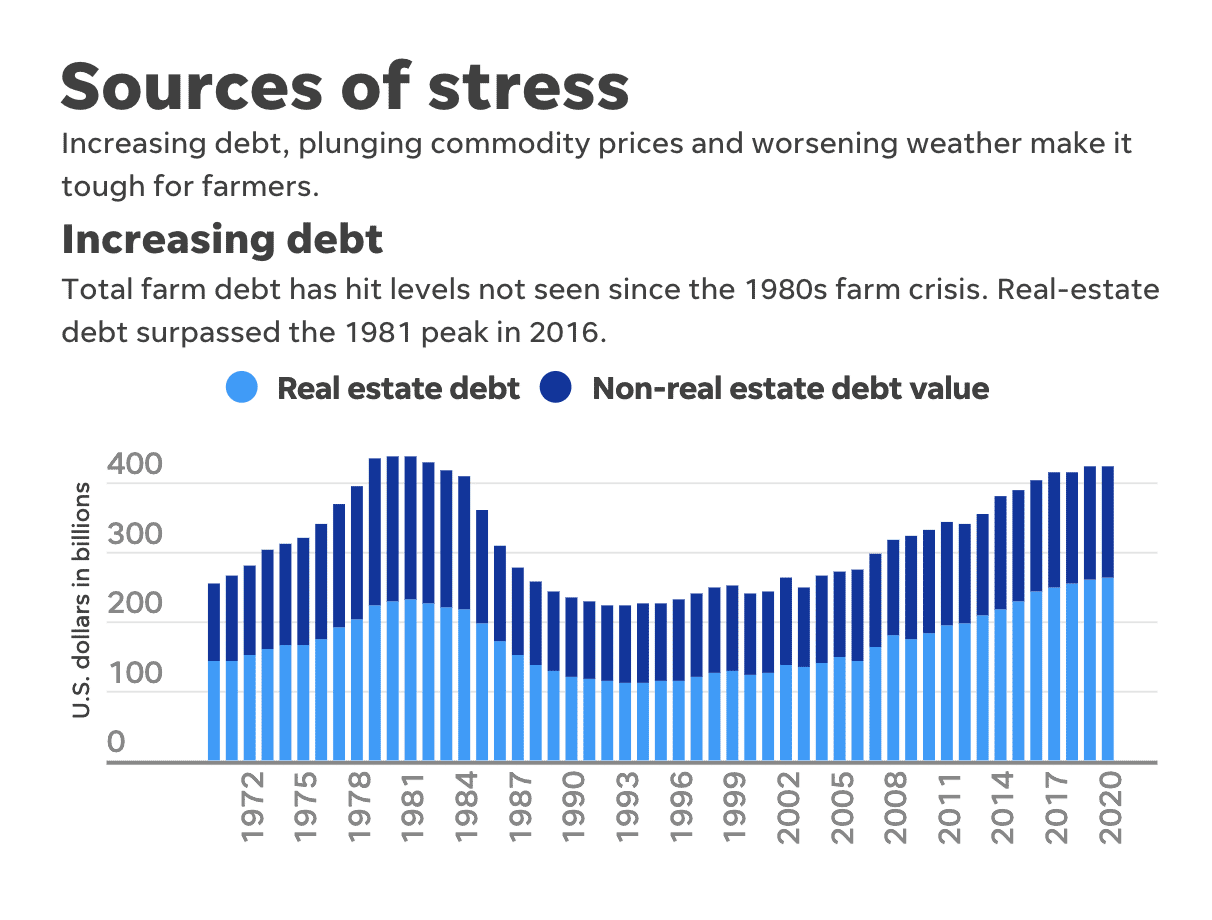
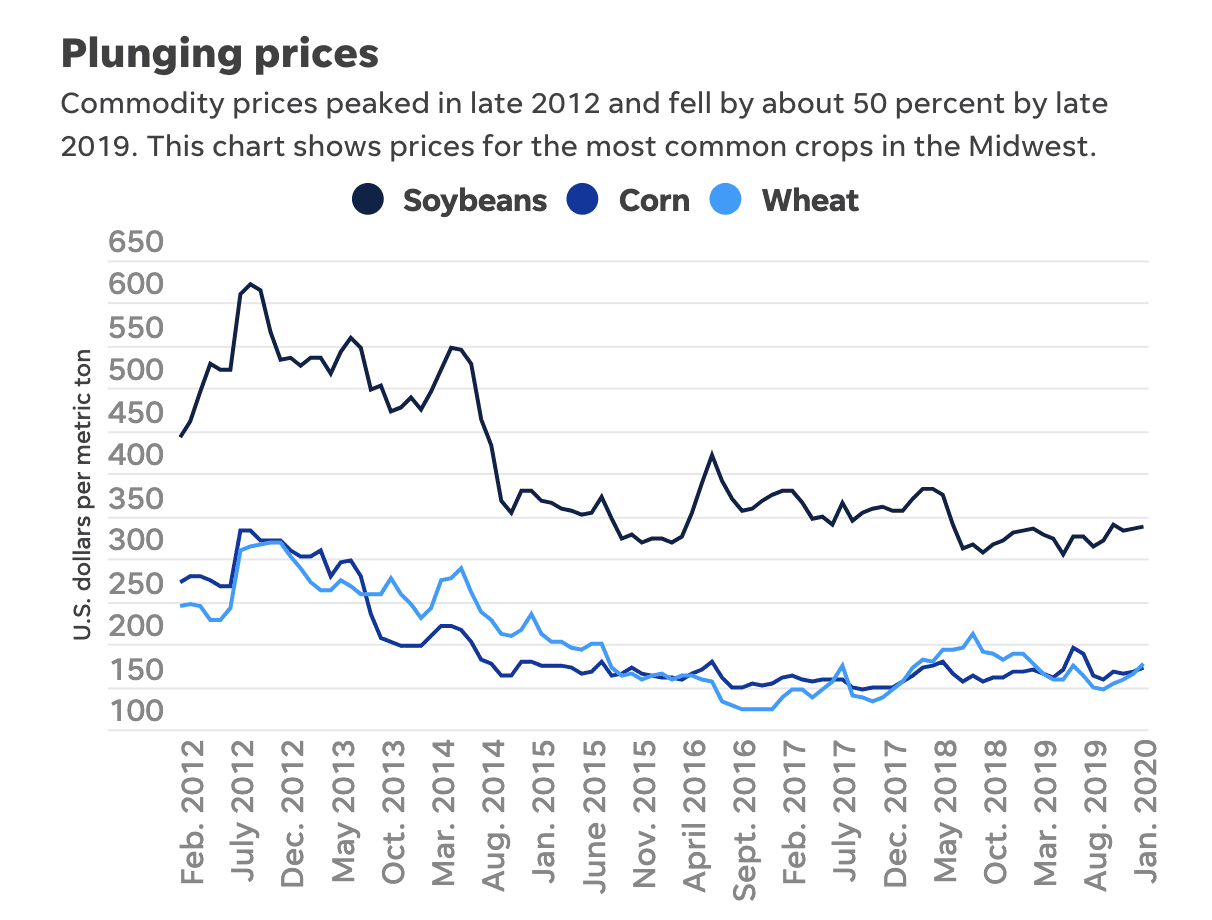
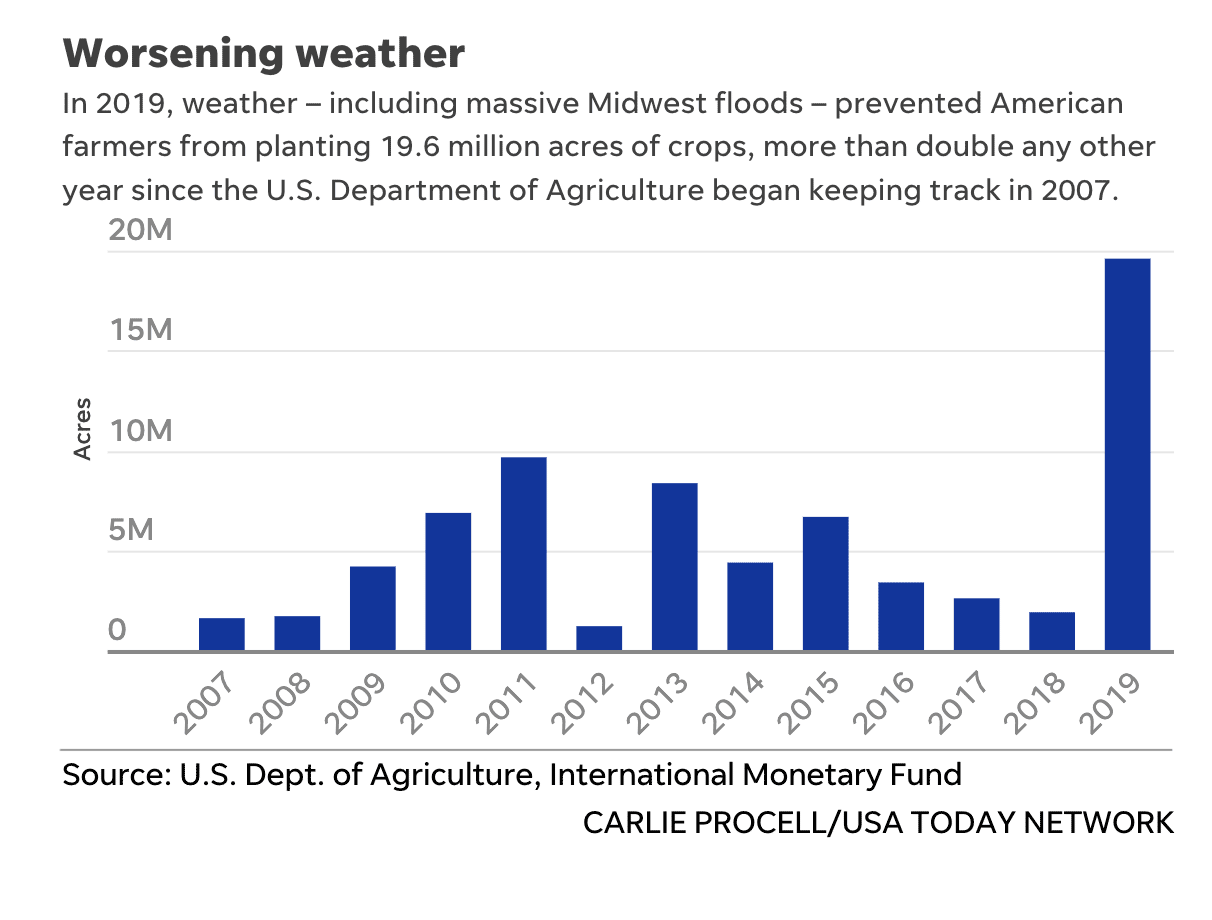
We had to find a different way to farm.
Adam jumped on YouTube to search for alternatives that led him down a rabbit hole to one particular video. It was a Pennsylvania pumpkin grower who had planted no-till into 6′ cereal rye to manage pigweed. He was immediately intrigued so he dove in deeper. By the end of the video he was searching local places to buy cereal rye and no one even knew what it was. He finally found some in Oklahoma and once he had it, he planted 300 acres of cereal rye. The next spring, the same pigweed he had been at war with, was more controlled than he had ever seen using the chemicals consultants swore were the solution.
And somewhere in that initial bloom of rye, hope grew too.
The following season he would plant 1,300 acres and then 2,300 next year. His input costs were decreasing rapidly and profitability began to rise for the first time in decades.
“The herbicide cost on those acres was about half of what it was everywhere else.”
As he looked at the numbers, he found something unexpected. The other costs on the farm were decreasing too. He began to unearth financial benefits he never expected, “I noticed we had irrigated a lot less on those acres in addition to using less inputs. We were saving on water and that was something we had never considered or hoped for. Here we were trying to find a solution for this weed and then, as time progressed, we didn’t need phosphorus or potassium fertilizers anymore. Then we noticed our nitrogen efficiency was way up. The benefits were unexpected and they continue to keep stacking up.”
Adam grows non-GMO corn and soybeans because the seed cost is 50 percent less than genetically modified seed. He pays $100-155 a bag for non-GMO corn, while the GMO corn seed costs $275-325. He also sells his non-GMO corn and soybeans to Ozark Mountain Poultry where they are used as feed. He earns premiums of $.80 per bushel for corn and $1.00 for soybeans above commodity prices. He also grows 400 acres of food-grade non-GMO soybeans that get an even higher premium.
Adam now shares regenerative solutions with any farmer who will lend him an ear – not only as a lifeline, but a way back to profitability and fulfillment in the work they love.
Regenerative practices can work in any situation. You’ve just got to figure out how to make it work.
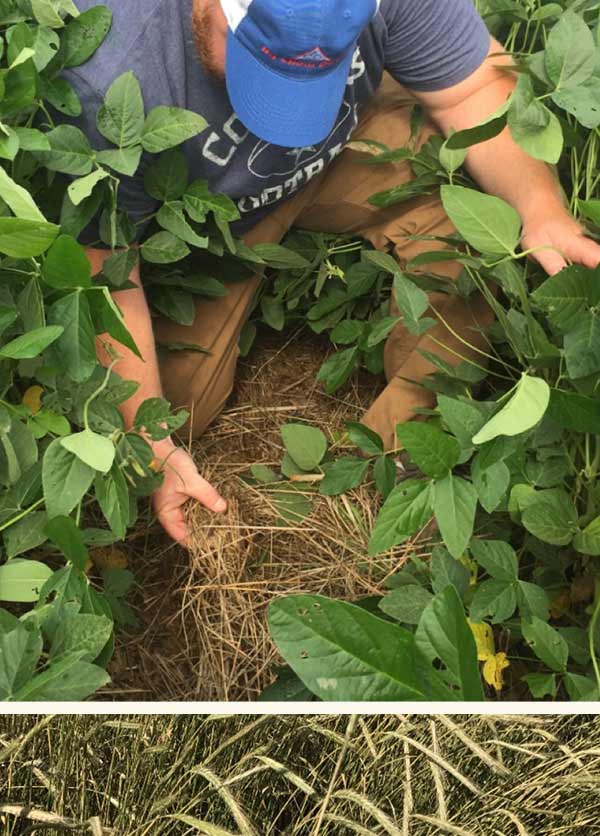


“The obstacle is Big Ag. They don’t want you to believe in other solutions that don’t require purchasing their chemical inputs. They don’t want to fund research that proves otherwise. There needs to be a counternarrative to Big Ag. They don’t have the farmer’s best interest in mind so we’ve got to do a better job of fighting that fight.”
And as it goes, the biggest obstacle is almost always the biggest opportunity, “There’s a lot of talk happening in the regenerative movement but it’s going in the wrong direction. We need to make our voice stronger and louder than Big Ag.”
Adam scrolls through his inbox and says anywhere between ten to twenty emails come in every day from chemical companies. Not one email in his inbox mentions cover crop seed. Farmers are targeted with messaging that promises higher yields and threatens disaster on the farm if they don’t use the latest product. On any given day Adam says farmers are bombarded with advertisements everywhere they go – commercial breaks on Sunday football games, on the local country radio station, social media and local events.
Adam feels strongly that part of the problem is that American farmers have outsourced their land management to crop consultants. Thousands of acres become hard to manage with limited resources so farmers are in a position where they are easily taken advantage of and dependent on the opinion of salesman and ag consultants to tell them what their crops need and how to generate higher yields. While the intentions of the individual consultant may be well placed, it is biased by the same information that bombards the farmer. Worse so, recommendations made by the consultant are disconnected monetarily. In other words, it’s a lot easier to spend someone else’s money than it is your own.
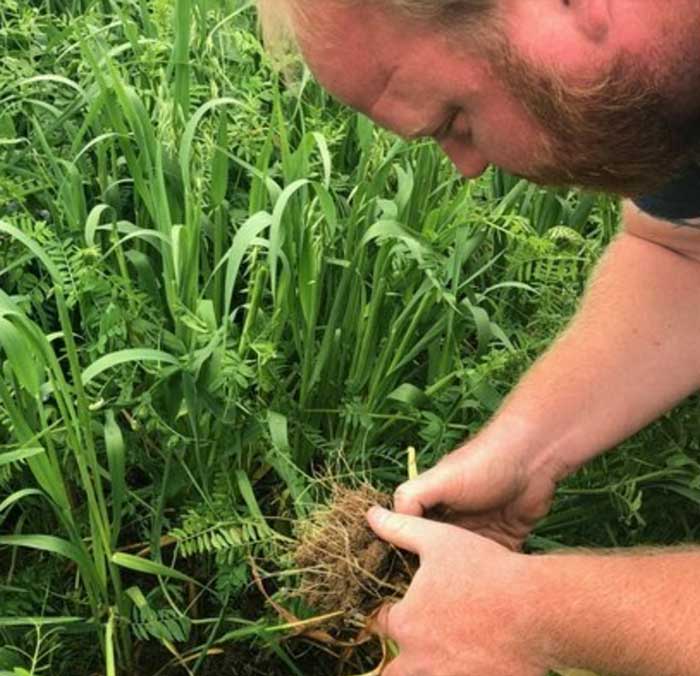
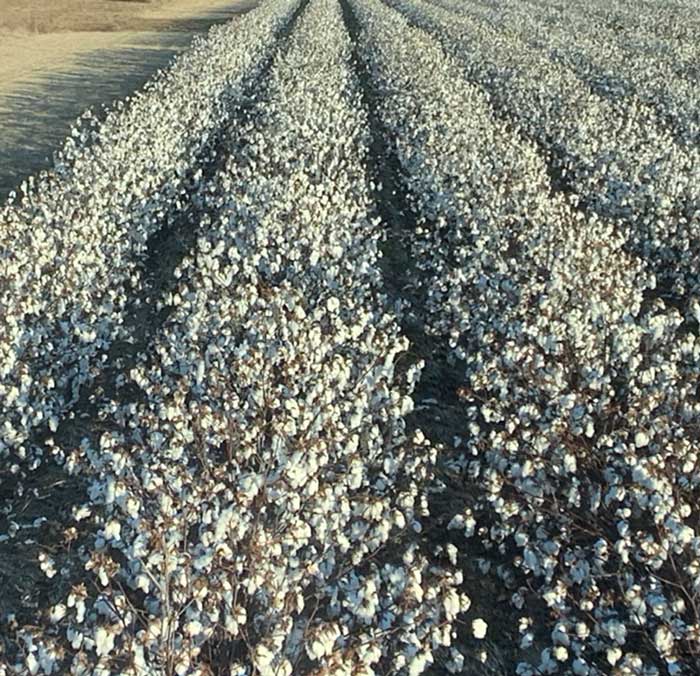
According to the Farm Bureau, farm income from the sales of crops and livestock have fallen by $12 billion since last year. Even with the influx of subsidies from the government due to COVID, U.S. farm cash receipts will be at the lowest level in more than a decade. Nearly every major sector of the farm economy will have lower cash receipts this year compared to last year, and total cash receipts will be the lowest since 2010.
“Farmers need a way to get off the treadmill. It’s hard, but it can be done. Farmers need to know there are other options and it’s not a matter of just profitability, it’s a matter of mental health.”
Adam believes if we are going to change the system, it starts with mentorship.
“We don’t need any more people lobbying in government, what we need are teachers. More folks teaching will change everything. We need more boots on the ground, on farms, and working with farmers to teach them how regenerative practices can turn their entire operation around. We need to be showing up where the chemical companies are showing up to share a new narrative because farmers think they only have one option and it’s just not true.”
That momentous night in 2009 when Adam took to YouTube to find another way of doing things was the beginning of what is now a 100% regenerative farm. He’s quick to share it has been a beast of a journey and that there is no easy button to change your entire operation. He attributes his shift in behavior to the small changes on small acreage that allowed him to see the proof in the soil pudding which gave him confidence to keep going.
Adam is the embodiment of being the change you want to see in the world. Instead of just stewarding his own land, he dedicates his time to teaching other farmers what he’s learned.
He’s passionate about soil health, how it impacts the numbers and how it kept his family legacy alive. Once you start to track the metrics and the impact on the farm, it transitions the power back to the farmer. Instead of being preyed on and taken advantage of, farmers become empowered, knowledgeable and able to make decisions based on those factors.
“I wish I could say the reason we changed our ways was because of the environment, but it was because these practices allowed to save our family farm.”
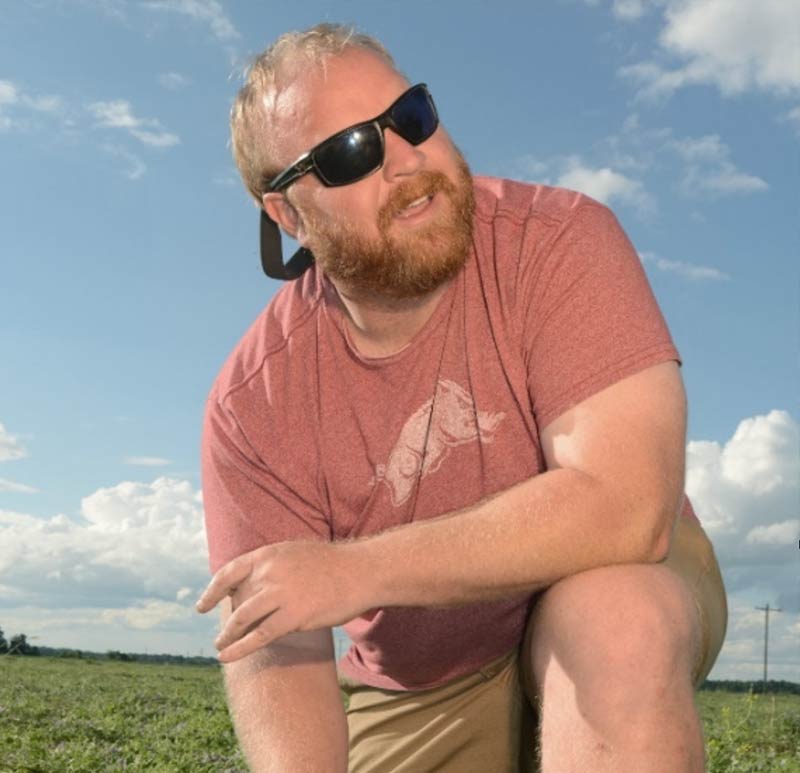

If we can change the psychological inputs chemical companies are planting deep within the psyche of farmers and meet those inputs with solutions that regenerate the soil and the success of the farm, we can change the narrative.
Farmers like Adam are leading the charge. He is a founding member of the Arkansas Soil Health Alliance teaching farmers how to be profitable & sustainable through soil health.
Connecting with stories like Adam’s brings it all back home to that night at the kitchen table – a reminder that it’s time to go beyond the blame of the current reality and instead for us all to take responsibility and honor the role we have in creating a better future.
